In 2022, Spain attracted 100 million international visitors a year (ref), making it the second most popular tourist destination in the world. So what is it that draws visitors to this Iberian country time and time again? Putting it another way, what is Spain famous for?
From its rich history to its world-renowned wines and cuisine, here are the things that Spain is best known for.
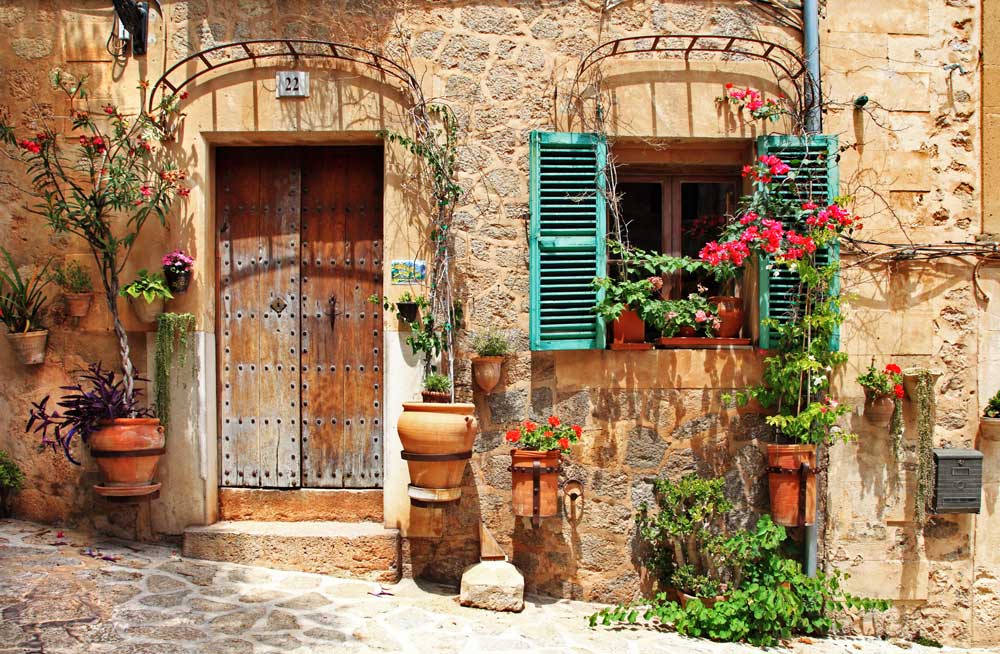
1. Rich History
Colonisation and conflict have left their mark on Spain.
The Romans invaded Iberia in 206 BC and held sway over the land until the fall of the Roman Empire in the 5th Century AD. Visit Tarragona to see its UNESCO-listed Roman ruins.
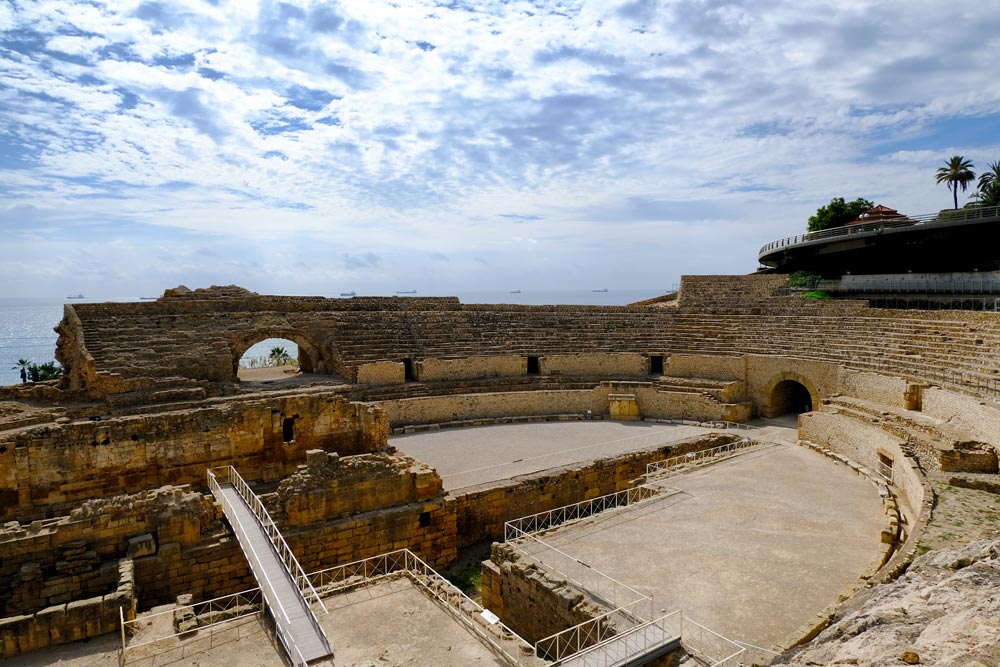
Spain was subsequently ruled by the Germanic Vandals and then the Visigoths, who surrendered to the Moors in the 8th Century.
1212 marked the beginning of the end of Moorish rule in Spain and the Bourbon dynasty acceded to the throne in the early 18th Century. Spain became a republic in 1931.
However, in historical terms, Spain is best known for the bloody civil war (1936-1939) and the resulting General Francisco Franco’s fascist dictatorship.
2. The Alhambra
Set against the peaks of the Sierra Nevada, the Alhambra palace and fortress complex in Granada is an outstanding legacy of the Moors’ occupation of Spain.
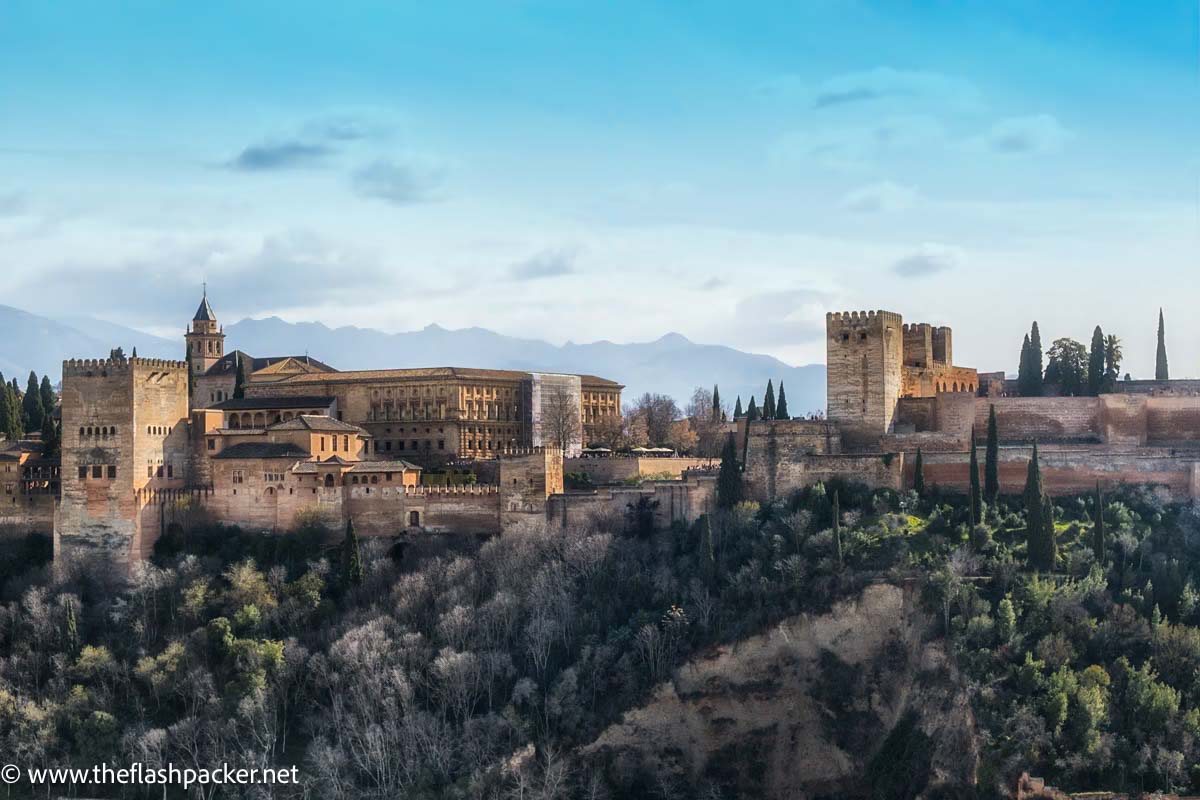
Although construction was started in 889 AD, what we see today largely dates from the 13th and 14th Centuries when the small fortress was converted into a royal palace. Following the expulsion of the Moors, parts of the palace were rebuilt in the Renaissance style and an Italianate palace was added.
But despite the later architectural tweaks, at its core, the Alhambra is a love letter to Moorish Spain.
Its Nazaries Palaces (Palacios Nazaríes) number among the finest Islamic buildings in Europe. As much about gardens as buildings, they include the Court of the Lions with its bubbling fountains.
From La Vela Tower, there are splendid views over the city of Granada, the Sierra Nevada, the Vega and surrounding villages.
3. Literature
Spain or, more precisely, Miguel de Cervantes can be thought of as the birthplace of the modern novel. His 1605 masterpiece, Don Quixote, tells the tale of the mission of a Spanish nobleman to revive chivalry and bring justice to the world.
However, the turn of the 20th Century marked Spain’s golden age of literature.
The Generation of 1898, a group of novelists, poets, essayists and thinkers active in Spain, included Pio Baroja, Ramón, María Del Valle-Inclán, Miguel de Unamuno, Antonio Machado y Ruiz. Together, they restored Spain to a position of literary and intellectual prominence.
Whilst this group of intellectuals were predominantly prose writers, the Generation of 1927 were poets. This avant-garde group included Pedro Salinas , Federico García Lorca, Luis Cernuda, Rafael Alberti and Gerardo Diego.
4. Bullfighting
The Spanish Civil War attracted international writers to support the (anti-Franco) Republicans, including Ernest Hemingway and George Orwell.
Hemmingway set some of his major works in Spain and one of the most famous of these, Death in the Afternoon, explores the art, ceremony, and traditions of Spanish bullfighting.
Famous and controversial in equal measure, bullfighting has been embedded in Spanish culture since the 8th Century. In this ritualistic – and uneven – contest, the matador kills the bull that has been weakened from sustained rushes and stabbings.
In an attempt to understand this part of Spanish culture, I attended a bullfight in Barcelona many years ago. As soon as the first stage began, I deeply regretted this decision. I should have just read Hemmingway’s book.
Nevertheless, as a defining cultural characteristic of this Iberian nation, bullfighting cannot be ignored.
5. Artists
Spain’s artistic achievements are more universally acceptable cultural pursuits.
The two Spanish artists that will be familiar to most people are Pablo Picasso and Salvador Dalí.
Born into a poor family in Màlaga in southern Spain in 1881, Pablo Picasso is considered to be one of the greatest painters of the 20th Century. Although his canon of artistic achievements is formidable, it was as the co-founder of Cubism that he secured his place amongst the greats.
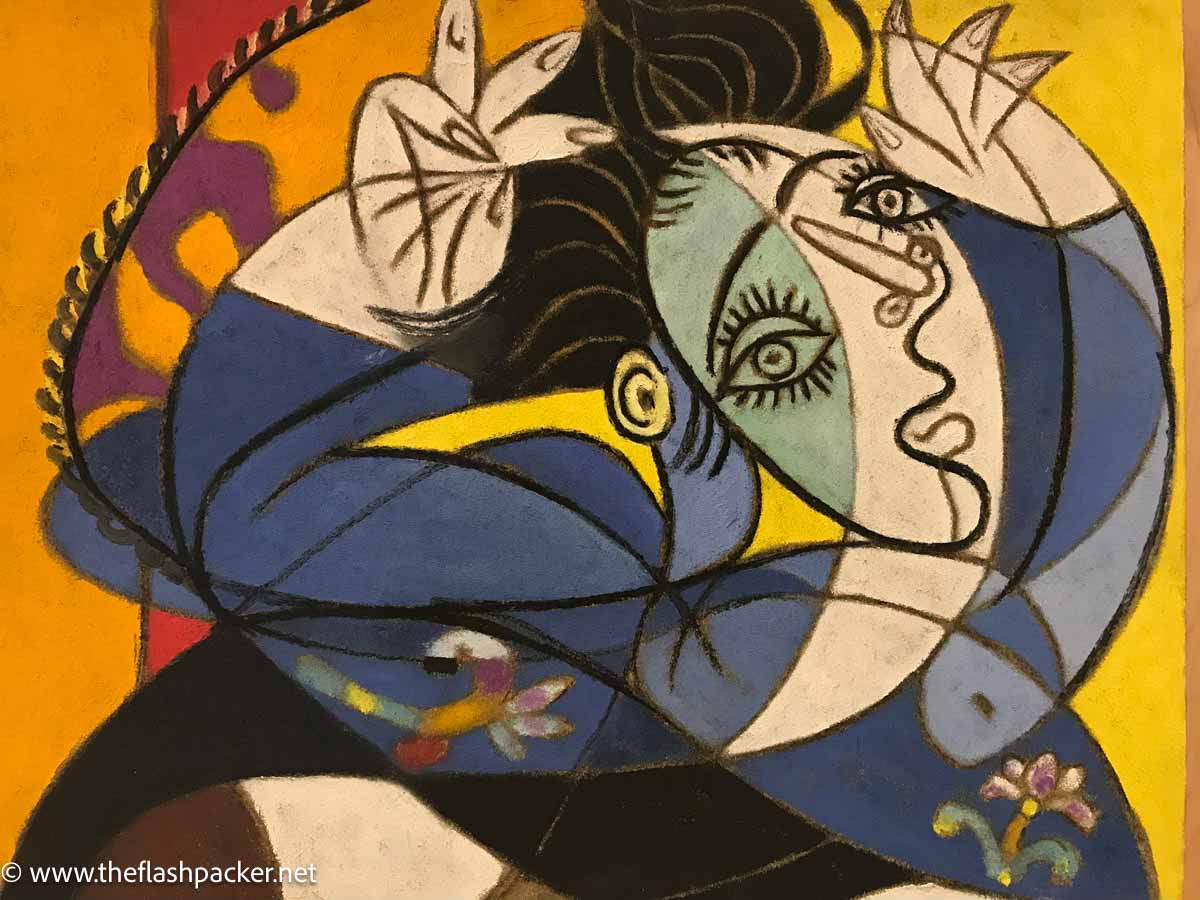
Salvador Dalí hailed from Figueres, north of Barcelona, and was a leading light in the Surrealist art movement in the 20th Century. He was eccentric in every sense of the word, from his spectacular trademark moustache to speaking in his made-up language.
If you are in Andalusia, it’s worth visiting Marbella to see the Dalí sculptures lining Avenida del Mar.
But Spain’s artistic legacy doesn’t start and end with these two painters and includes El Greco, Francisco de Goya, Diego Velazquez and Joan Miró, to name but a few.
6. Flamenco
Spanish artistic expression isn’t limited to visual art forms. Occupying a position on UNESCO’s list of Intangible Cultural Heritage of Humanity, flamenco is one of the things for which Spain is famous the world over.
The roots of this art form can be traced back to 18th Century Andalusia.
Emotions are expressed through flamenco’s vocal music (cante) and dancing (baile).
Cante is accompanied by the flamenco guitar, castanets, a percussion box known as el cajón, hand-clapping and heel-clicking. The interpretation of baile depends on the individual performer.
You can find flamenco shows throughout Spain but Seville is widely considered to be one of the best places.
7. Gaudi
One of the best reasons to visit Spain is for its architecture, particularly its Modernist buildings.
In a break from tradition, the Catalan Modernist movement used materials like Iron, tiles and concrete to create shapes, colours and concepts inspired by nature. The most famous Modernista architect is Antoni Gaudi, and one of the best things to do in Barcelona is to explore his distinctive style.
Seven of his properties, including Park Güell and Casa Batlló, have UNESCO World Heritage status. But it is his magnum opus, the still-incomplete Sagrada Família in Barcelona, that draws the crowds.
Even if you only have a day in Barcelona, place the Sagrada Família at the top of your list.
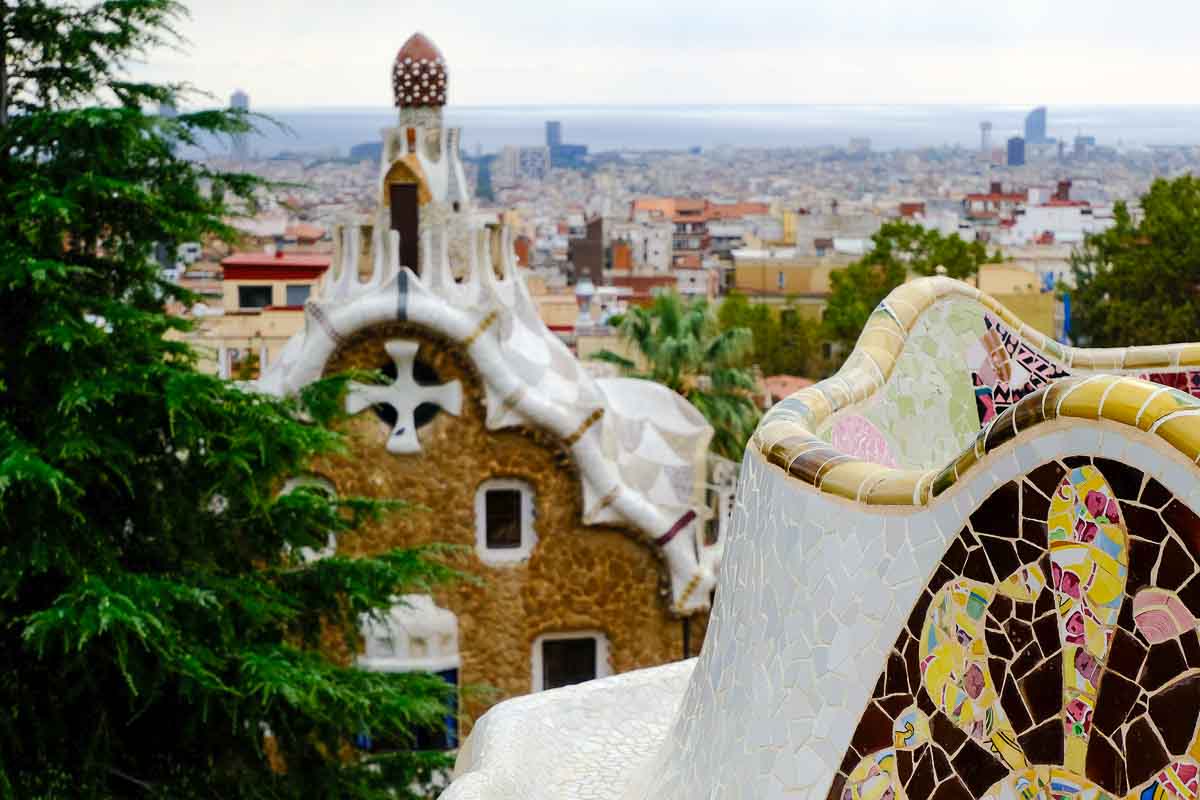
Gaudí worked on the Sagrada Família from 1883 until his premature death in 1926.
His Roman Catholic faith intensified during the project and believed that his mission was to glorify God through his work. This led to him being dubbed ‘God’s Architect’ by his contemporaries.
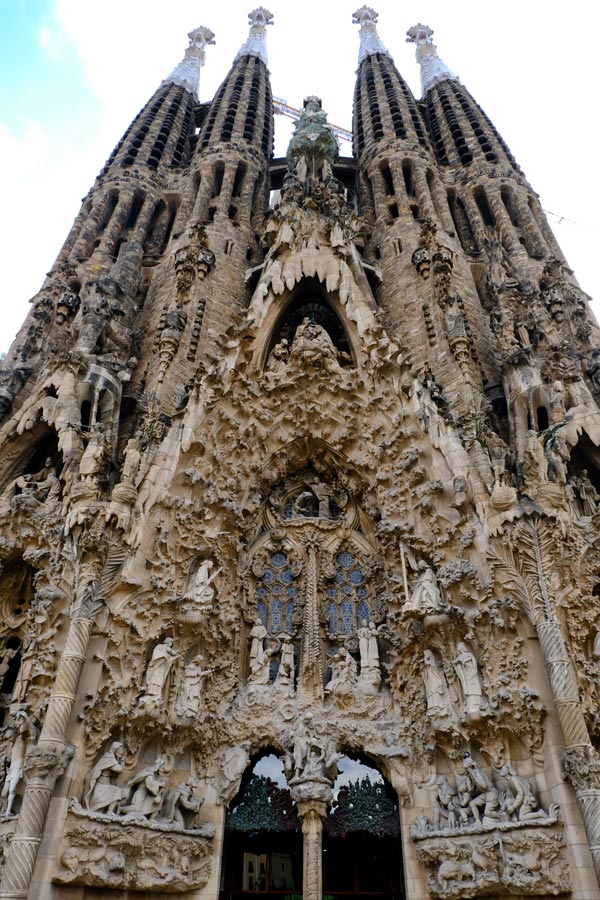
8. Religion
Although Spain does not have an official religion, almost 70% of the population identifies as Catholic.
Catholicism pervades Spain’s historical and cultural landscape. You will find a church in every neighbourhood in Spain and Christian artefacts are commonplace.
Spain is home to some of the most spectacular cathedrals in Europe, including the majestic Seville Cathedral, the third-largest in the world
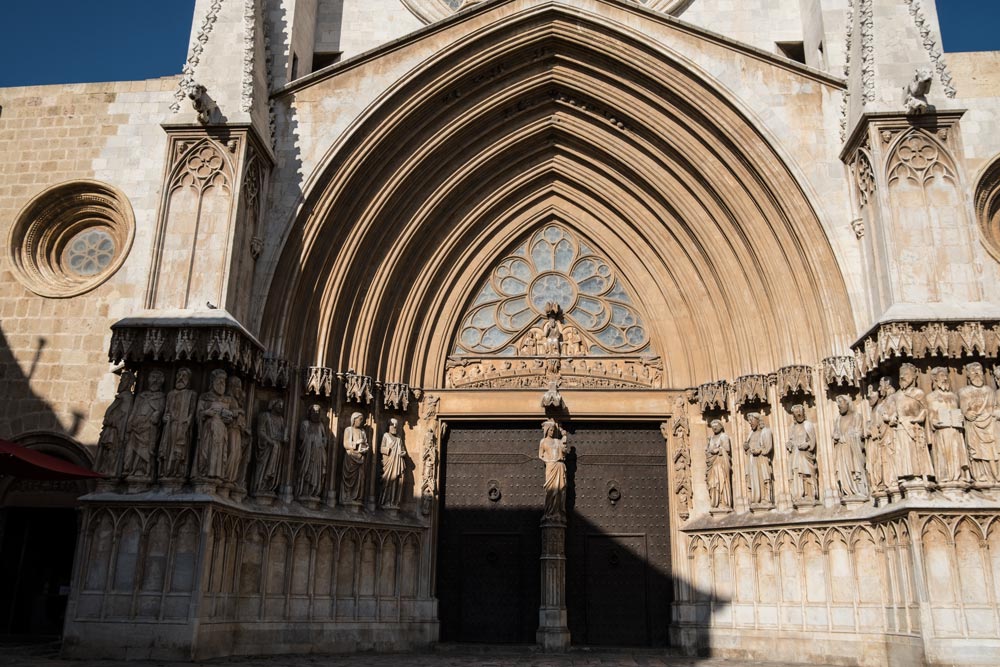
Nowadays, Catholicism for many Spaniards is mostly cultural. However, some firmly-held traditions and rituals centre on Catholic celebrations and holidays.
9. Fiestas
Each region or city in Spain has a patron saint, who is celebrated on a dedicated day each year (santo). Some of these celebrations have evolved into fun and vibrant fiestas, many of which have achieved international fame.
Two of the most well-known fiestas are the Pamplona Bull Run in San Fermi and La Tomatina Festival in Buñol near Valencia, the scene of a massive tomato fight.
Visit Valencia in March for one of Spain’s biggest festivals, Las Fallas, celebrating the feast of San José. Or did you know that the Carnival in Santa Cruz de Tenerife is the second biggest in the world after Rio de Janeiro?
10. Football
Is football the new religion in Spain? Maybe.
Football is firmly embedded into the nation’s DNA and Spain is home to two of the best international teams in the world: Real Madrid and Barcelona. El Clasico, the game where these two great rivals play against each other, is always the most important game of the year in Spain.
And this fanaticism pays off. Spaniards are very good at football. Spain is one of only eight countries ever to have won the FIFA World Cup (2010).
11. Idyllic Islands
Spain’s islands offer a unique Spanish travel experience. You get all that you might expect from holidaying in peninsular Spain – history, beauty, culture – but each of these islands has a personality and attractions that cannot be found on the mainland.
There are two main groups of Spanish islands: the Canary Islands and the Balearic Islands.
Sitting in the Atlantic Ocean, the Canary Islands are closer to the African coastline than to Spain. The main Canary Islands are Tenerife, Gran Canaria, Lanzarote, Fuerteventura, La Palma, La Gomera and El Hierro.
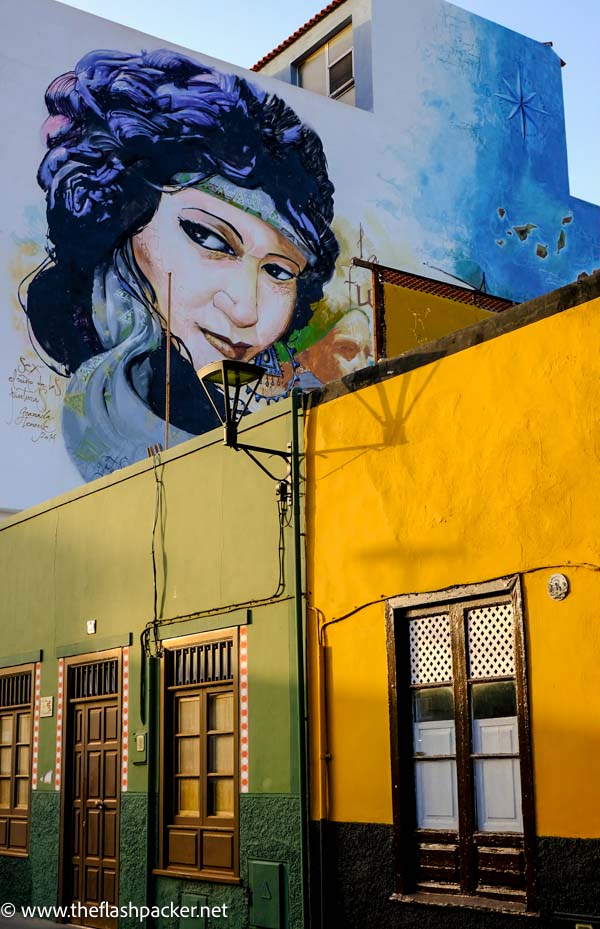
Spain’s Balearic Islands are in the Mediterranean Sea and number Mallorca (Majorca), Menorca and Formentera (Palma de Mallorca is one of Spain’s best coastal cities). The most famous Balearic Island is Ibiza, party-central for European teenagers after they finish high school and known for its nightclubs.
12. Late-night culture
And what about that nightlife? The Spanish are night owls and like everything late.
They shop late, eat late and stay out late. Other than tourist-oriented businesses, you’ll struggle to find a restaurant open before 8 pm.
Most Spanish wouldn’t dream of dining before 9 pm. If you turn up as restaurants are opening their doors, you will likely be the only diner.
13. Siesta
It’s often said that the siesta allows Spanish people to stay out until the wee small hours. However, this is more of a stereotype than common practice.
This Mediterranean tradition of taking an afternoon nap originated with farmworkers sleeping off their heavy lunch and taking refuge from the hottest part of the day. Although the nap has largely been abandoned in modern Spain, many businesses will close in the afternoon and late lunches can be on the leisurely side
14. Paella
Spain is known for its cuisine across the globe. Let’s start by looking at the most famous Spanish dish of them all, paella.
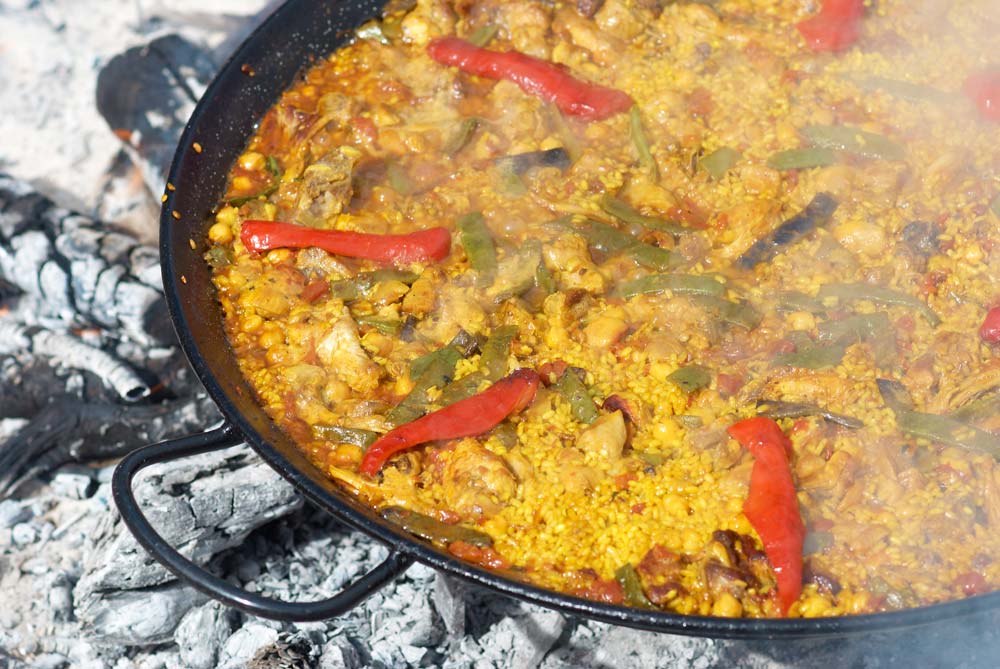
Originally a lunchtime food for farmers and farm labourers, this dish has come to typify Spanish cuisine like no other.
Valencia is the undisputed home of paella. Traditional Valencian paella has no seafood but a mixture of chicken, rabbit and beans.
Seafood was a later addition in coastal areas where they used it to replace meat. Although commonly served outside of Spain, a mixta paella, containing meat and seafood, is a big no-no for traditionalists.
15. Tapas
When it comes to Spanish culinary exports, tapas are second only to paella.
Starting life as free bar snacks to accompany drinks, tapas have evolved into an international phenomenon. Although each bar will have its own take on tapas, typical snacks are patatas bravas (potatoes in a spicy tomato sauce), tortilla, chorizo, calamari and local cheese and olives.
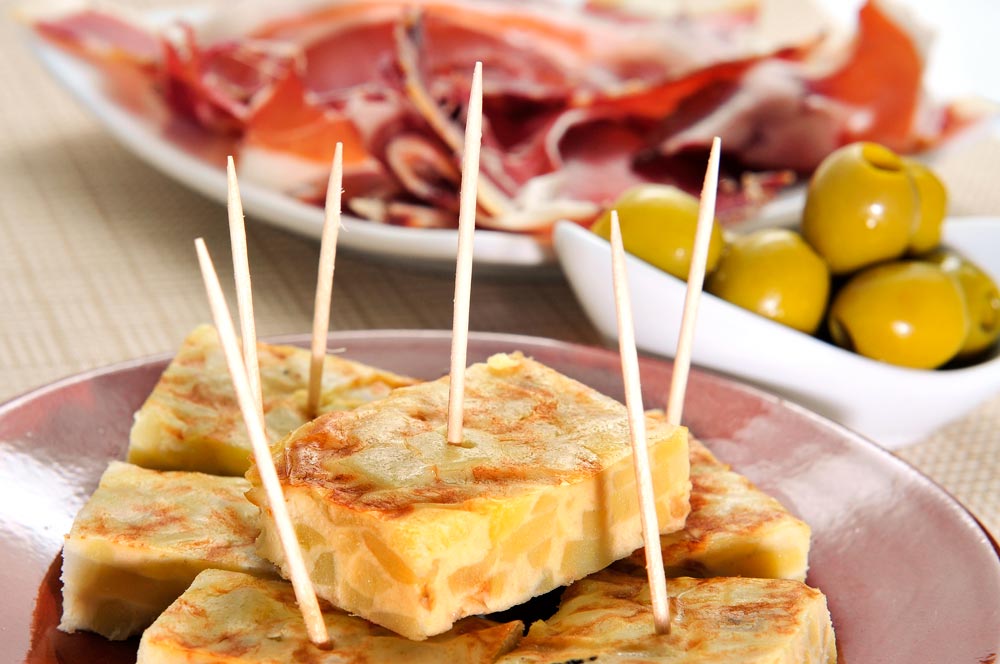
Tapas are ingrained into the cultural DNA of Spain. The evening is the time for catching up with friends over drinks and these bite-size morsels encourage conversation in a way that a full-size entire meal cannot.
16. Jamon Iberico
You haven’t tasted ham until you’ve slipped a slice of jamón ibérico into your mouth.
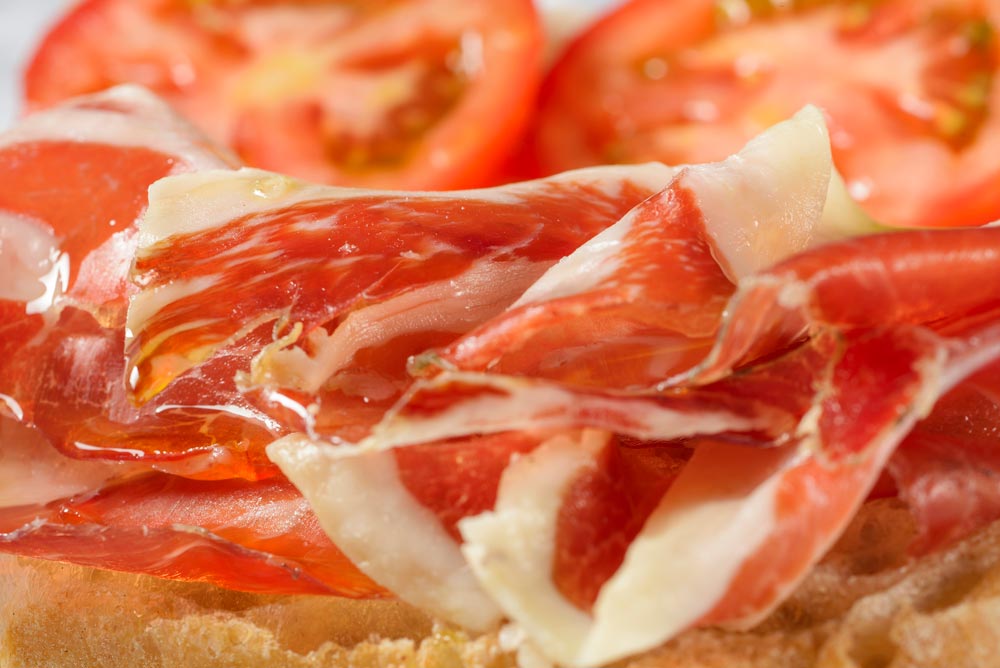
Hailing primarily from the central and southwestern region of the Iberian Peninsula, jamón ibérico comes from Black Iberian breed pigs. These are also known as pata negra due to their distinctive black hooves.
The best jamón ibérico is one labelled de bellota which owes its rich flavour to the sweet-tasting acorns that the pigs eat.
17. Olive Oil
Olive oil is the not-so-secret sauce in Spanish cuisine.
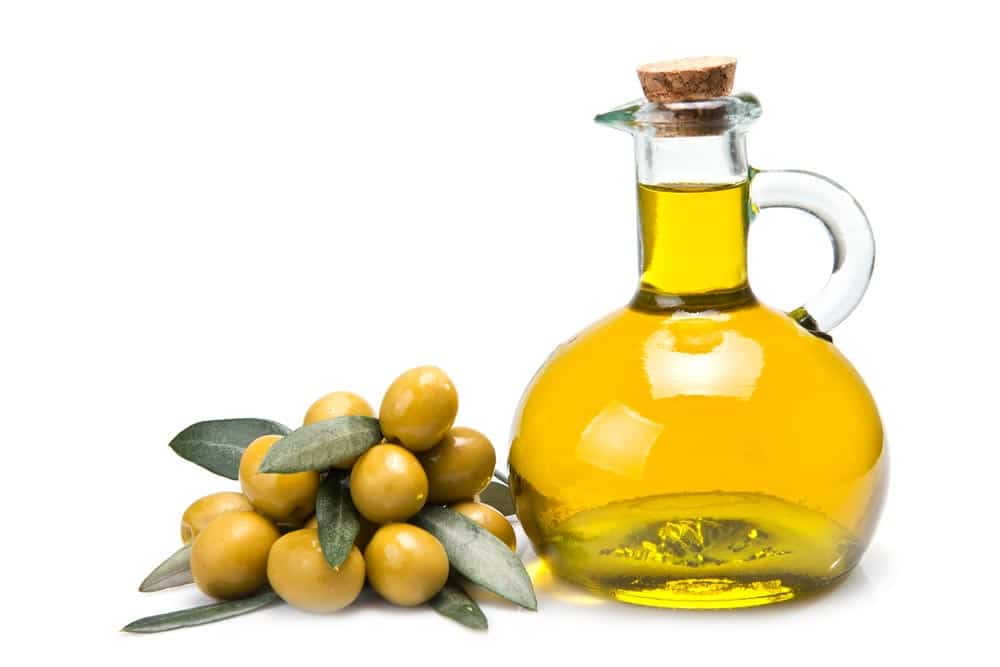
Spain is the world’s biggest producer and exporter of olive oil, producing around half of the world’s total olive oil. The country’s temperate climate is ideal for growing olives, with cultivation concentrated in Andalusia in southern Spain.
Spanish olive oil is more yellow in appearance than that produced in Italy and it has a distinctive fruity and nutty flavour.
18. Wine
When you are flying over southern Spain, you will notice that the landscape is liberally sprinkled with olive groves and vineyards. So it will come as no surprise that another thing Spain is famous for is its wines.
After Italy and France, it is the third-largest producer of wine worldwide.
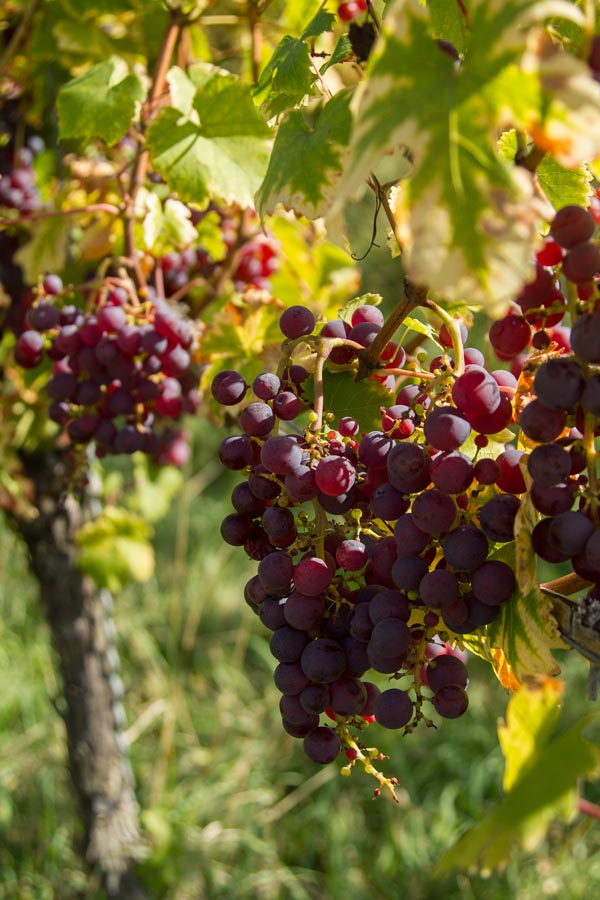
From its one million hectares of vineyards and 400 grape varieties, some of the world’s most famous wines are produced.
Cava is a sparkling wine made using the traditional method (like Champagne in France) in ten different regions in Spain. However, 90% is made in Sant Sadurni d’Anoia, just outside Barcelona, including the well-known Freixenet brand.
Less acidic than Champagne, Cava is more intense with a sometimes fruity, flavour. An ideal pairing with tapas.
Rioja is synonymous with Spanish wine.
The 63,000 hectares of vineyards in the Rioja region in North Central Spain produce some of the best wine in the world. 90% of these are red; the remainder are white and rosé.
Crimson-red Rioja is a perfect blend of three grape varieties: Tempranillo (the dominant grape), Garnacha and Mazuelo. It has a high tannin content and a fruity flavour and goes well with most foods.
19. Sangria
Rioja is the wine most commonly used to make sangria, one of Spain’s favourite tipples.
This is essentially a wine cocktail, made from wine, a sweetener, a liqueur a non-alcoholic mixer and fruit. Lots of fruit.
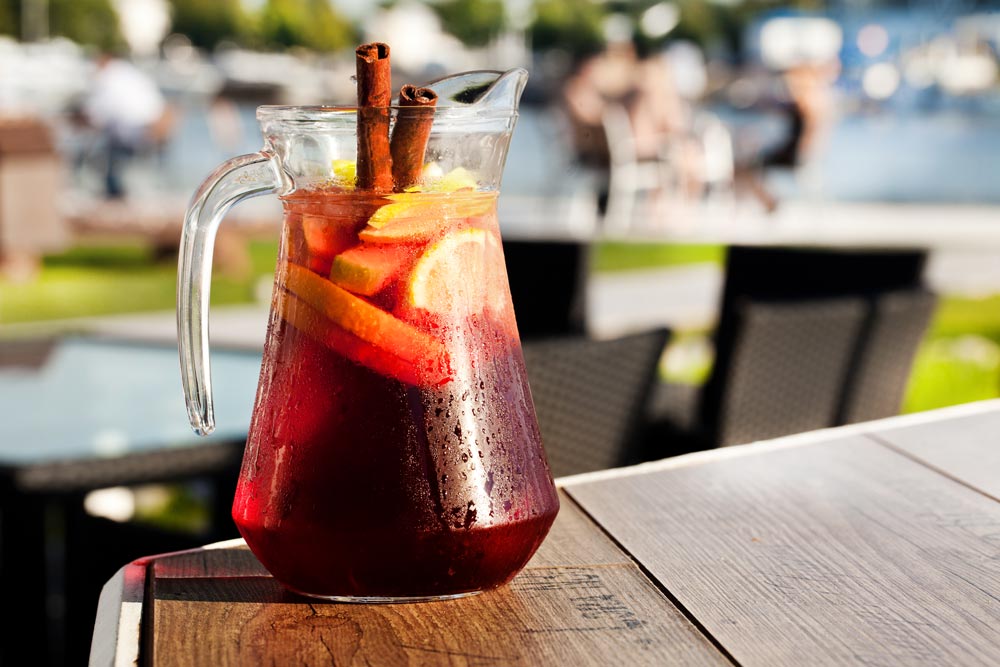
The term sangria comes from the word sangre, Spanish for “blood,” referring to the drink’s traditional base of red wine. Traditionalists will opt for a red wine base, but sangria can also be made from white or rosé wines.
20. Sherry
Sherry is one of Spain’s most famous exports.
Taking its name from the town of Jerez, sherry is a complex fortified wine that is aged in barrels, this gives them a wide range of flavours, from dry salinity to nutty toastiness. Spaniards favour the bone-dry fino, but other types of Sherry include oloroso, amontillado, palo cortado and Pedro Ximenez.
Whilst traditional cream Sherry remains a staple of British drinks cabinets, gone are the days when Sherry was synonymous with a cloying drink served with mince pies at Christmas. Dry styles are now much more in vogue, neat and chilled, or as a base for cocktails.
Salud!
DISCOVER MORE ABOUT SPAIN!
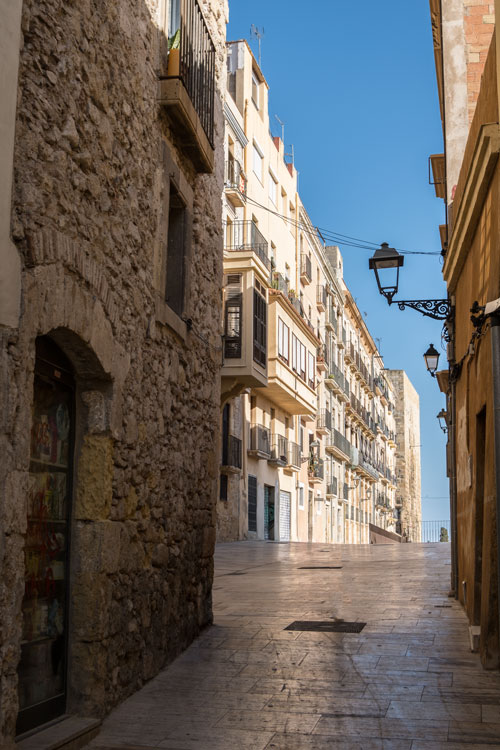
- What is Spain Famous For? 20 Reasons to Visit Spain
- 2 Days in Barcelona: Itinerary & Best Things to Do
- One Day in Barcelona from a Cruise Ship: Itinerary & Best Things to Do
- Top 10 Things to Do in Tarragona: Spain’s Roman City by the Sea
- Tips for Visiting Sagrada Família: Things You Should Know Before You Go
- One Day in Palma de Mallorca, Spain
- 15 Fabulous Reasons for Visiting Valencia, Spain
- Solo Travel in Portugal and Spain: 10 Unmissable Places to Visit
- The Ultimate One-Week Tenerife Itinerary & Guide
- 10 Best Things to do in Puerto de la Cruz, Tenerife
- Exploring Tenerife by Bus: TITSA Buses Made Easy in 2022
